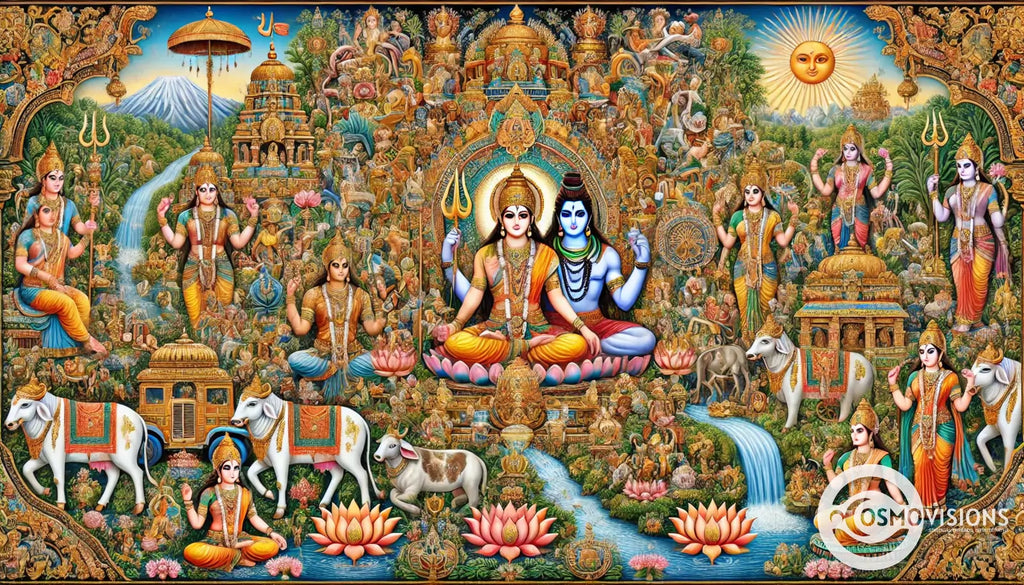Exploring the Meaning of Shiva: Jewish Funeral Customs

Exploring the traditions and customs surrounding death can often leave us feeling perplexed, especially when we try to understand practices from cultures different from our own. One aspect that catches the attention of many is the meaning of Shiva in Jewish funeral customs.
A fact worth noting right at the start is that Shiva represents a significant period of mourning in Judaism, spanning seven days where families come together to grieve and remember their loved ones. According to Jewish law, Shiva is observed for close relatives, and there are specific rules, such as the prohibition of sitting Shiva on Shabbat.
In this article, we’ll shed light on how Jews observe this sacred time, examining its history two customs, practices, and importance within the family and community. By exploring Shiva’s role in bereavement in Judaism, you will gain insights into not just the customs but also the profound emotional healing they foster among those left behind.
Let this journey broaden your understanding.
What is Shiva in Jewish Traditions?
Shiva in Jewish traditions marks a traditional seven-day period of mourning observed immediately after the burial of a family member. The shiva begin period starts right after the burial and concludes seven days later. This time allows families to reflect on the life and legacy of the deceased, fostering a community-based support system that honors respect for the soul.
During Shiva, immediate family members withdraw from daily activities to sit together, often at one house, where friends and extended family come to offer condolences and share memories.
Observing Shiva incorporates specific customs aimed at helping mourners process their grief. Activities include covering mirrors in the funeral home itself, sitting on low stools as a sign of humility before God, and reciting prayers that reaffirm faith and comfort.
The practice roots itself deeply in Jewish history, embodying a ritualistic expression of communal solidarity and personal introspection during periods of loss.
Definition of Shiva in Judaism
In Judaism, Shiva begins immediately after the burial and stands as a period marked by deep mourning and reflection following the death of a loved one. It embodies the Jewish community’s structured approach to grief, allowing mourners to gradually transition back into life’s daily routines while honoring the memory of the deceased.
This time-honored tradition spans seven days, during which family members gather in one home, often the residence of the departed, disconnecting from the joys and distractions of everyday existence to focus on their loss. Shiva is where sorrow meets solace within the embrace of community. Observance details include covering mirrors in the house; this represents a shift away from self-awareness towards introspection and remembrance. Participants refrain from engaging in work or leisure activities, dedicating their time instead to prayer sessions with visitors who come to offer condolences.
The essence of Shiva lies not just in its ritualistic practices but also in its ability to forge communal bonds that reaffirm life during profound sorrow. Through this process, Shiva serves as a spiritual journey from despair towards gradual healing, firmly rooted within Jewish customs and beliefs around death and mourning.

Shiva as a Traditional Seven-Day Period of Mourning
Shiva marks a significant seven-day period of mourning in Jewish tradition, serving as a time for families to come together in their grief and honor the deceased. This practice embodies the concept of respect for those who have passed away, with immediate family members playing crucial roles.
In contrast, the cultural significance of a shiva temple in Hinduism highlights the diverse ways different cultures approach mourning and spirituality.
They spend this time reflecting on the life and legacy of the departed, abstaining from activities that are considered distractions from mourning such as work, and engaging in prayer sessions that often involve reciting Kaddish.
This week-long observance acts as both a tribute to the lost loved one and a structured period during which families can express their sorrow within the support network of friends, community members, and religious leaders.
The custom derives its origins from Judaic teachings that emphasize human nature’s fragility and the importance of community support in times of loss. Observing Shiva allows mourners to process their grief with dignity while following rituals steeped in history, dating back thousands of years ago.
During this time, homes become places of solemn reflection where mirrors are covered to discourage vanity, sitting low symbolizes bringing oneself closer to earth or nature., and lighting a memorial candle signifies remembrance.
Through these practices rooted deeply in spirituality and cultural traditions, Shiva encapsulates Judaism’s holistic approach to death - honoring it as an integral part of life’s cycle while fostering an environment conducive to healing after experiencing loss.
How Families Observe Shiva
Families observing Shiva in Judaism enter a profound period of mourning, marking a time for reflection and homage to the deceased. This tradition, rich in history and meaning, unfolds over seven days immediately following the burial. Similarly, in Hindu culture, Shiva temples hold significant importance. These temples feature items such as linga, Shiva-Parvati iconography, and the bull Nandi within the premises. They are places where devotees offer milk, fruits, flowers, fresh leaves, and sweets to the lingam, and they play a crucial role in various festivals, rituals, and theological aspects related to Shiva worship.
Here is how families participate in this sacred practice:
1. Cover all mirrors in the house: This act symbolizes the shift of focus away from oneself and toward the process of grieving and honoring the memory of the departed.
2. Light a special Shiva candle: A candle burns continuously for seven days, representing the soul of the deceased and the perpetual light they brought into the world.
3. Sit on low stools or directly on the floor: Family members demonstrate their grief by choosing seats that are closer to the ground, reflecting humility and closeness to their loved one who has passed.
4. Recite prayers from Siddur: The family gathers to recite Kaddish and other prayers at specified times, invoking divine compassion and peace for the soul of the departed.
5. Receive visitors offering condolences: Friends, neighbors, and community members visit the bereaved family’s home to offer support, share memories of the deceased, and sometimes bring food so that those mourning do not concern themselves with daily tasks.
6. Refrain from activities deemed as pleasurable: Family members observing Shiva avoid music, entertainment, wearing elaborate clothes or jewelry as a mark of respect towards their loss.
7. Conduct study sessions in memory of the deceased: It’s common for families to organize or participate in sessions where religious texts are studied; this honors their loved one’s memory through learning and spiritual growth.
8. Wear a torn garment or black ribbon cut in ceremony: To publicly express their grief, mourners wear clothing that is ritually torn or don an intentionally cut ribbon during Shiva.
9. Abstain from work commitments: Those observing Shiva withdraw temporarily from professional duties to fully immerse themselves in mourning and remembrance.
10. Transitioning back to routine life slowly after Shiva concludes encapsulates respecting both human emotion’s intensity after a loss and life’s continuity despite personal tragedy.
Exploring this custom provides a window into Jewish mourning practices’ depth, resilience built within communal support frameworks, and profound expressions of love across different forms of time moving forward into “Historical Context: Where Did the Word Shiva Originate?”
Historical Context: Where Did the Word Shiva Originate?
The word “Shiva” carries a profound lineage, tracing its origins back to the ancient Vedic texts of India. This term first appears in the Rig Veda, one of the oldest scriptures known to human civilization, suggesting its usage dates back thousands of years.
In the context of the Indus Valley civilization, the Pashupati seal has sparked debates among scholars. Some argue that the figure on the seal represents an early manifestation of Lord Shiva, while others believe its characteristics align more closely with Rudra, highlighting the ongoing dispute over the interpretation of the seal.
Scholars attribute its roots to Proto-Indo-European language structures, pointing toward a shared cultural and linguistic heritage main deities that predates much of recorded history. The name Shiva itself embodies multifaceted meanings including “auspicious,” “gracious,” and even “destroyer” within different contexts.
These definitions reflect the deity’s complex character in Hindu mythology—both as supreme being a source of benevolence and as part of the Trimurti alongside Brahma and Vishnu, signifying creation and preservation respectively.
In exploring Shiva’s etymological journey, one uncovers ties to Rudra—a Vedic deity associated with storm winds and hunt. Over centuries, Rudra’s fearsome aspects softened as he merged with many deities with more benign characteristics under the umbrella name of hindu god Shiva in post-Vedic literature like Puranas (Linga Purana).
Here lies an intriguing evolution: from an ambivalent figure feared for his tempestuous nature to one revered for his protective yet destructive capabilities necessary for cosmic balance.
Ancient scripts such as Shaivism texts further deepen our understanding by depicting Shiva not merely as a god but also embodying asceticism on Mount Kailash; hence highlighting his significance beyond destruction—to include elements such as meditation, yoga, dance (Nataraja), and association with powerful symbols like lingam. Shiva represents a confluence of thematic elements—from fearsome destroyer to protector—showcasing religion’s role in mirroring societal values over time.

The Word History of Shiva
Shiva, a term deeply rooted in Jewish customs, speaks to the ritual of mourning observed for seven days after the burial of a loved one. Originating from the Hebrew word "shiv'ah," which literally translates to "seven," this practice reflects both respect and remembrance.
The observance serves as a structured period during which families can mourn, reflect, and offer support to each other in a way that honors the deceased's memory while adhering to their faith’s traditions.
In ancient texts and across various cultures, supreme god Shiva embodies diverse significances — from being associated with devastation and renewal in Hindu mythology as part of the trinity including Brahma and Vishnu, where He dances in cosmic cycles of creation and destruction, to its profound embodiment of mourning within Judaism.
This duality underscores not just linguistic richness but also cultural depth spanning continents from Israel to Nepal. Each mention or invocation brings forth imagery ranging from Shiv'ah’s solemnity to Shiva's cosmic dance beneath the moonlight—with His companion Nandi (Hinduism), dreadlocks swaying amidst tales of energy transformation and absolute liberation embracing every aspect from Tamas philosophy to lunar phases reflected upon Ganges’ waters.
Usage in Ancient Texts and Puranas
Ancient texts and Puranas serve as the bedrock for understanding the multifaceted character of Shiva, revealing his significance in Hindu deities’ pantheon. Scriptures like Shri Rudram and epics such as Mahadevi narrate tales of his cosmic functions, associating him with creation, protection, and destruction.
These sources depict Shiva wielding a trishula (trident), seated on Nandi the bull, and adorned with crescent moon and serpent, symbols reflecting his deep-rooted shakti (power) and connection to primal elements.
Embedded within these narratives are mentions of Kartikeya and Ganesha, highlighting Shiva’s role as a father alongside Parvati in the divine family structure.
The depth of symbolism tied to each attributive epithet — from holding the river Ganga in his hair to bearing a third eye on his forehead — narrates stories beyond mere mythological interest; they explore philosophical concepts like tamas (darkness or destructiveness) versus divinity's illuminative essence.
Scholars interpret these legends through artistic expressions found in sculpture across millennia, tracing back to Proto-Indo-European mythology roots that define and enrich our modern interpretation of cultural practices surrounding deities like Kali alongside great god Shiva.
Moving forward into examining "How Do You Observe Shiva?", it becomes essential to understand how ancient wisdom influences contemporary rituals.
Shiva's Meaning Over the Years
Transitioning from the usage in ancient texts and Puranas, the meaning of Shiva has seen a remarkable evolution over time. This transformation reflects in religious texts and across cultures, hinting at Shiva's vast significance beyond its origin.
Initially rooted in Vedas and historical Vedic religion, Shiva embodied complex spiritual concepts that have been pivotal to understanding creation, destruction, and rebirth. The deity's representation as Ardhanarishvara symbolizes unity and duality—a philosophical depth that transcends mere idol worship.
Shiva's association with elements such as the Milky Way, Serpent symbolism, and Himalayas enriches its narrative within Hinduism while illustrating nature's immense power and cyclicality.
These connections portray Shiva not just as a god bound by mythology but as an ultimate creator whose essence pervades space and time. The festival dedicated to this deity draws millions into timeless celebration—showcasing cultural continuity and reverence that has lasted through millennia.
Shiva represents the limitless potential of energy transforming through time—an eternal cycle of birth, existence, dissolution.
How Do You Observe Shiva?
Observing Shiva involves a series of customs that honor the deceased and support the mourners. These practices draw from a deep well of tradition, embodying both respect for those who have passed and solace for those left behind.
1. Families initiate Shiva immediately after burial, marking the beginning of seven days of intense mourning. This period allows family members to reflect on their loss and commence their journey through grief with communal support.
2. The immediate family members traditionally cover mirrors in the home. This act symbolizes a shift away from self-concern towards introspection and honoring the memory of the departed.
3. Participants refrain from engaging in joyous activities such as listening to music or painting, focusing instead on remembrance and healing.
4. It is customary for mourners not to work during Shiva, dedicating their time wholly to mourning rituals and prayer, emphasizing the importance of pausing daily life to honor human connections and loss.
5. Visitors bring meals to the bereaved family, a practice rooted in compassion and community support, ensuring that those observing Shiva can do so without worrying about mundane tasks like cooking.
6. The lighting of a special candle that burns continuously for seven days serves as a symbol of the eternal nature of the soul, offering light in times of darkness.
7. People engage in prayers such as Kaddish, recited in a minyan (a quorum of ten adults), which underscores community's central role in providing comfort and solidarity during trying times.
8. Family members sit on low stools or on the floor as a sign of humility and mourning, grounding themselves physically and emotionally during this period.
9. Discussions about the qualities and memories of the deceased are encouraged among visitors, fostering an atmosphere where stories can be shared freely, revealing layers of meaning within personal narratives tied to cultural history.
10. Finally, some families may observe other customs specific to their own traditions or interpretations within Judaism, showcasing how personal belief systems intertwine with collective practices to create meaningful expressions of grief.
These steps offer structure amidst chaos, providing mourners with tangible ways to express sorrow while surrounded by community—a testament to resilience in face of loss.

Practices During the Shiva Period: Lighting the Shiva Candle
The Shiva period in Judaism encompasses a deeply spiritual and structured time for mourning the loss of a loved one. This seven-day practice involves distinct customs, each with its roots firmly planted in tradition and spirituality, guiding families through their grief with communal support.
1. Families commence Shiva immediately after the burial, symbolizing the start of intense mourning. This act honors the deceased while reflecting on the fragility of life.
2. Sitting low to the ground or on low stools becomes a physical manifestation of grief, serving as a poignant reminder of humility and closeness to Earth.
3. Covering mirrors in the household shifts focus away from personal vanity and towards inner reflection and remembrance.
4. Lighting a candle that burns for seven days represents the eternal spirit of the deceased, illuminating paths in dark times.
5. Recitation of prayers, especially Kaddish, occurs daily. This ritual emphasizes faith's role in solace and communal bonding over shared sorrow.
6. Visitors are welcome to offer condolences, but traditional greetings like handshakes are avoided to respect mourners' withdrawn state.
7. The family refrains from engaging in work or entertainment, dedicating their time solely to reflection and remembrance, underscoring life’s impermanence.
Each element during this period fosters an environment where mourners can manage their grief within a supportive community framework, emphasizing connectivity even in absence.
Respecting the Deceased: Immediate Family Members' Roles
Immediate family members play pivotal roles in honoring the deceased during Shiva, a period steeped in tradition and reflection. They create a space where sorrow can reside, ensuring the dignity of the one who has passed is upheld through actions that speak louder than words.
Family members refrain from engaging in their usual routines to focus solely on mourning, embodying the essence of respect for their loved one's journey from this world.
In life, we respect each other by listening. In death, we honor them by commemorating. - This quote captures the sacred responsibility placed upon immediate family members during Shiva. They engage in practices such as covering mirrors and sitting on low stools or on the floor to symbolize their grief and loss, turning away from vanity and comfort to reflect deep introspection and connection with the departed soul. Through these acts of remembrance and mourning, they weave a tapestry of communal support and memory that transcends time itself.
Common Traditions and Customs
Shiva embodies a profound period of mourning in Jewish tradition. This time honors the deceased and helps the family manage their grief through established customs and practices.
1. Covering mirrors in the home serves as a powerful symbol during Shiva, directing the focus away from physical appearances and towards introspection and spiritual healing.
2.Sitting on low stools or on the floor is another hallmark of Shiva, echoing an ancient tradition that signifies the mourner’s lowered state in the wake of loss.
3. Lighting a 24-hour candle immediately after burial symbolizes the eternal spirit of the person who has passed away, acting as a beacon of remembrance throughout the seven-day mourning period.
4. Reciting Kaddish, a prayer exalting God, requires a minyan (a quorum of ten adults) to gather in support of those mourning, reinforcing community bonds and offering solace.
5. Refraining from work and daily routines underscores the mourner's detachment from worldly concerns, allowing them to fully engage with their grief and begin healing.
6. Receiving visitors is customary; friends and community members provide comfort by sharing memories of the departed, highlighting their impact and legacy.
7. Meals of condolence are prepared by neighbors or relatives, ensuring that mourners are nourished without worrying about mundane tasks such as cooking, embodying communal support and care.
8. Avoiding entertainment and limiting social activities reflect respect for the deceased by maintaining a somber atmosphere conducive to reflection and mourning.
9. Removing leather shoes and opting for simpler footwear is symbolic of humility and mourning in Judaic traditions, emphasizing spiritual over material values during this reflective time.
10. Discussing topics such as science or history can occur if it relates to honoring the memory or intellectual passions of the person who has died, demonstrating respect through continuing their legacy of learning.
These actions weave together to form a tapestry of ritual that comforts individuals while binding communities closer together in times of sorrow.
Shiva's Role in Mourning: The Seven-Day Practice
Shiva marks a period of seven days where families gather to mourn, reflecting on the life and passage of their loved ones. This practice holds deep-rooted significance in Jewish customs, illustrating a symbolic journey through grief and reminiscence.
Loved ones abstain from work, engaging instead in activities that honor the deceased's memory. They turn inward, away from the distractions of daily life, creating a space for communal solace and support.
Observing Shiva involves various restrictions aimed at allowing mourners to focus solely on their loss. These include covering mirrors in the house to discourage vanity and sitting on low stools or the floor as a sign of humility during this time.
The act serves as an external expression of the inner turmoil that accompanies loss. Through these actions, participants embody respect for the departed while finding their path through sorrow towards healing—each day symbolizing a step forward in this profoundly personal yet universally shared experience.
Why Seven Days? Understanding the Significance
The tradition of Shiva, observed as a seven-day period of mourning in Judaism, carries profound cultural and spiritual significance that transcends the mere passage of time. This duration is carefully structured to mirror the creation narrative within Judaic teaching, where the world was crafted in six days, followed by a day of rest.
Reflecting on this parallel, mourners dedicate seven days to withdraw from the everyday chatter and bustle, turning inward and allowing for an intimate space to honor their connection with the departed.
This week-long journey through grief acts as a bridge between loss and the gradual return to life's routines. Each day adds another layer to understanding loss, akin to moving through distinct phases toward acceptance.
The shiva brings people together in shared solemnity; it acts not just as a ritual but as a communal embrace, offering solace. Through this ancient practice embedded within Jewish culture lies profound wisdom on coping with sorrow—acknowledging its depth before stepping back into the stream of life enriched with memories beautifully preserved beyond temporal constraints.
Mourning Activities and Restrictions
Mourning activities and restrictions during Shiva reflect the depth of loss and respect for the deceased. Families and community members engage in practices that honor the memory while observing limitations that symbolize their grief.
1. Cover mirrors in the home: This allows mourners to focus on inner reflection rather than external appearances, emphasizing the spiritual over the material.
2. Sit on low stools or the floor: Demonstrating humility and proximity to the earth, this act reminds participants of life's fragile nature.
3. Refrain from wearing leather shoes: Symbolizing comfort and luxury, abstaining from leather honors simplicity and detachment from physical pleasures.
4. Abandon shaving or haircuts: This signifies a period of mourning where typical self-grooming and beautification are set aside to honor those who have passed.
5. Limit entertainment or celebratory events: Mourning families avoid music, parties, or similar joyful gatherings to maintain a somber atmosphere reflective of their loss.
6. Halt regular work routines: Some family members may not attend work for seven days, focusing instead on healing and remembrance within the supportive circle of friends and community.
7. Recite prayers with a minyan (quorum): Gatherings for prayer emphasize communal support, enabling mourners to express grief while upholding religious traditions.
8. Accept meals from neighbors and community members: Providing food signifies solidarity with mourners, recognizing their need for comfort during this period without burdening them with the tasks of daily living.
These practices foster an environment where individuals can confront their sorrow openly while receiving support from those around them. Engaging in such activities creates a structured space for grief, allowing emotions to be expressed within a framework that honors both the deceased and cultural tradition.
Moving into understanding why these specific customs hold significance requires exploring their origins and meanings further in historical contexts.
Shiva's Influence Beyond Judaism
Shiva's cultural reach stretches far beyond the confines of Judaism, marking its presence in various global traditions and funerary practices. Comparing Shiva to similar mourning periods reveals a shared human inclination towards setting aside time for grief and reflection after losing even a friend or loved one.
This practice finds echoes in the Hindu tradition of "Shradh," where families honor their deceased relatives with prayers and rituals over several days, illustrating a universal quest for connecting with those who have passed away.
In exploring Shiva's global significance, one discovers its subtle impact on literary works and academic discussions concerning bereavement practices across cultures. Scholars draw parallels between Jewish mourning customs detailed in texts like Vishnu Sahasranama and the philosophical foundations of grief observed in other religions.
Through this comparative lens, Shiva not only serves as a noun defining a specific Judaic ritual but also becomes a bridge that links diverse spiritual landscapes, from the ancient rites recorded on the Pashupati seal to modern interpretations of loss and solace found within international communities.
Comparative Funerary Practices
Exploring funerary practices reveals the rich tapestry of beliefs and rituals that cultures around the world hold dear. Shiva, in Jewish tradition, offers a unique lens through which to examine these sacred customs, allowing us to understand the profound ways in which humanity honors the deceased.
1. Funeral practices across different cultures share common elements of mourning and remembrance, but each adds its own distinctive rituals and meanings.
2. In Hinduism, similar to Shiva in Judaism, there is a period of mourning known as "Sutak," where family members follow specific rites for purification and honor the memory of the departed. This period varies in length depending on the relation to the deceased but reflects a universal acknowledgment of loss and respect.
3. The Buddhist tradition emphasizes meditation and reflection during the funeral process, encouraging attendees to ponder life's impermanence. Chants and prayers guide souls towards enlightenment or rebirth, demonstrating an intricate blend of spirituality with funeral rites.
4. Indigenous communities often incorporate elements from nature into their funeral practices. For instance, Native American tribes may use animal skins or parts in ceremonies to symbolize qualities of the deceased or their journey into the afterlife.
5. Some African cultures practice elaborate burial rituals that include dancing, feasting, and storytelling. These activities celebrate the life of the deceased while providing communal support for the bereaved family.
6. In many Islamic traditions, burial takes place as soon as possible after death, emphasizing simplicity and equality before God. The body is washed and wrapped in a plain shroud, then prayed over facing Mecca — highlighting humility and devotion.
7. Victorian England introduced elaborate mourning etiquette that included wearing specific garments made of crepe fabric and observing periods of social withdrawal based on one's relationship to the deceased. Such customs underscored societal expectations regarding grief.
8. Contemporary Western funerals often involve gatherings for memorials where friends and family can share memories of those they have lost. This practice underscores a more personal approach to honoring loved ones while still allowing for collective mourning.
Each custom carries its own symbolic weight, connecting communities through shared expressions of love, loss, and reverence for life's transient nature.
These varied traditions reveal how culture shapes our approach to death and reflect underlying values about connection,
commemoration, and transition – illustrating humanity's endless search for meaning in face of mortality.
Global Significance and Cultural Influence
Bridging from the comparative analysis of funerary practices, Shiva's impact extends beyond Judaism into a global framework, resonating with diverse cultures and spiritual traditions.
This broad acceptance underscores its profound cultural influence, highlighting how mourning rituals often share a universal language of grief and remembrance. Through this lens, Shiva becomes a conduit for exploring shared human experiences across continents.
Shiva embodies concepts like Tamas (philosophy) in its reflection on loss and the cycle of life and death, paralleling beliefs found in Hinduism with Shaktism and the veneration of deities like Khandoba.
The practice mirrors elements found in Panchayatana puja within the Smarta tradition, where the essence of grieving is central to communal support and spiritual recovery. Globally, scholars highlight similarities between Jewish mourning customs and those observed by indigenous communities near oceans or deserts; each integrates natural elements into their rituals as metaphors for life’s cycles.
Such parallels underline how exploring Shiva can provide rich insights into universal aspects of mourning that transcend specific religious or cultural boundaries.
Shiva in Literature and Dictionaries
Dictionaries both ancient and modern often include the term "Shiva", especially when they aim to cover religious or cultural vocabulary. They define Shiva as a period of seven days reserved for mourning by Jewish families following the loss of a close relative, reflecting its crucial role in Jewish traditions.
This definition captures the essence hebrew word meaning of Shiva, serving as an educational reference that helps people understand its significance beyond mere words.
Example sentences in literature often illustrate how individuals engage with the practice of Shiva. They might describe a family gathered in quiet reflection, their home open to visitors who come to offer condolences, embodying the communal support central to this time.
Through these snapshots, readers gain insight into the logistical aspects and the emotional landscape shaped by this venerable tradition.
Shiva in Modern and Ancient Dictionaries
Shiva worship finds its definition stretched across time, from ancient scripts to modern pages. Ancient dictionaries and texts spotlight Shiva within the tradition of Hinduism, associating it with destruction and renewal as part of the cosmic cycle, where Shiva dances in the eternal flow of creation alongside his wife, Sati.
This portrayal contrasts sharply with modern interpretations in English content, which align more closely with Jewish customs. Here, dictionaries define Shiva as a period of mourning lasting seven days following the burial of a loved one.
Such a practice involves immediate family member and members gathering to honor the deceased, often refraining from activities that divert attention away from reflection and communal support.
This evolution in meaning highlights how language encapsulates vast shifts in cultural practices and spiritual understandings. Transitioning smoothly from religious scriptures to contemporary dictionary entries showcases humanity's ongoing journey through grief and reverence across different cultures.
The term "Shiva" serves as a bridge connecting various traditions and stands as evidence of language’s power to adapt over centuries while retaining profound significance.
Next unfolds an exploration into example sentences using "Shiva," offering insight into its versatile application throughout history and context today.
Example Sentences Using Shiva
Transitioning from the detailed exploration of Shiva in modern and ancient dictionaries offers a foundation to understand its usage in context. The child cannot fully grasp the historical significance without seeing "Shiva" embedded within sentences that breathe life into this traditional period of mourning.
For instance, consider a sentence illustrating familial dynamics: "During Shiva, the boy watched as his family transformed their home into a place where time seemed to stand still, honoring their beloved with prayer and reflection." This example encapsulates the practice itself and its profound impact on participants, demonstrating how traditions like Shiva create a sacred space for grief and healing.
From another perspective focusing on communal support, one might say: "The entire community came together to observe Shiva, allowing those in mourning to lean on shared strength and find comfort amidst loss." These sentences showcase how deeply interwoven such practices are within cultural fabric, offering insights into the role of collective empathy within Jewish tradition.
Through these examples, readers gain an intimate understanding of Shiva's significance beyond mere definitions—witnessing its embodiment through actions that speak louder than words could ever convey.




























